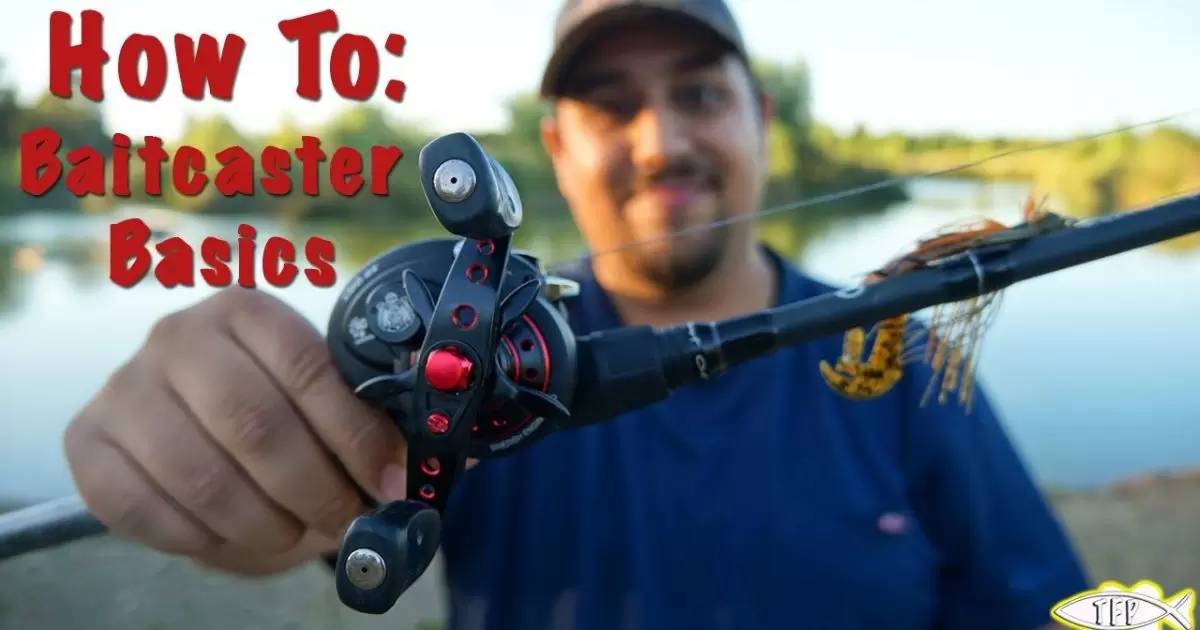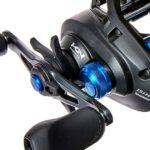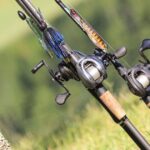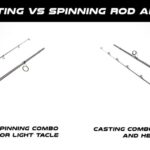A baitcaster is a type of fishing reel that requires a different technique compared to spinning reels. Unlike spinning reels, baitcasters have a revolving spool and are mounted on top of the fishing rod. The design allows for more precise casting control, making them popular among anglers targeting larger fish species.
The key lies in understanding the reel’s mechanics and learning the proper technique for casting. How to use a baitcaster for the first time can be a daunting question for beginners, but fear not, it’s a skill that can be mastered with a bit of practice.
Using a baitcaster for the first time involves a combination of thumb control, reel tension adjustments, and practice. Begin by familiarizing yourself with the reel’s components, such as the spool tension knob and brake system.
Baitcaster Basics
Getting started with a baitcaster is an exciting step for any angler. Unlike spinning reels, baitcasters have a revolving spool mounted on top of the fishing rod. The key to mastering the baitcaster lies in understanding its basic components.
The reel’s design allows for more precise casting control, making it popular among those targeting larger fish species. As a beginner, familiarize yourself with the essential parts, including the spool tension knob and brake system.
Familiarizing Yourself with Baitcaster Components
Before delving into the world of baitcasting, take the time to familiarize yourself with the reel’s components. The spool tension knob and brake system are critical elements that influence casting performance. The spool tension knob regulates the speed at which the line releases during a cast, while the brake system helps prevent backlash.
As a beginner, understanding how to manipulate these components ensures a smoother learning curve. By becoming acquainted with the baitcaster’s anatomy, you set the stage for a more confident and enjoyable experience as you venture into adjusting spool tension and exploring the brake system. You must have to use a Suitable line length for the baitcaster.
Thumb Control Techniques

Mastering thumb control is essential when learning how to use a baitcaster for the first time. Start by placing your thumb lightly on the spool, creating just enough friction to control the line. As you cast, apply gentle pressure to the spool with your thumb to prevent backlash.
Practice this technique in a controlled environment, gradually adjusting the pressure based on the type of lure and casting distance. With time, you’ll develop a keen sense of when to release and apply thumb pressure, ensuring smoother and more accurate casts.
| Thumb Control Techniques | Description |
| Light Thumb Placement | Begin by lightly placing your thumb on the spool. This creates just enough friction to control the line during casting. |
| Gentle Pressure Application | Apply gentle pressure to the spool with your thumb as you cast to prevent backlash. Practice adjusting the pressure based on the type of lure and desired casting distance. |
| Controlled Environment Practice | Practice thumb control in a controlled environment. Gradually refine your technique, experimenting with different pressures, and gaining a sense of when to release and apply thumb pressure for smoother and more accurate casts. |
Developing a Comfortable Grip on Your Baitcaster
Establishing a comfortable grip on your baitcaster is the foundation for effective fishing. Hold the rod with a relaxed and natural grip, ensuring that your fingers wrap comfortably around the handle. Experiment with different grip styles to find what feels most secure for you.
Pay attention to the reel placement in your hand, keeping it snug but not too tight. A comfortable grip reduces fatigue during extended fishing sessions and enhances your ability to control the baitcaster. Finding your unique, comfortable grip is a key step toward becoming a confident baitcaster user.
Choosing the Right Open Area for Initial Casting Practice
Selecting the appropriate open area for your initial casting practice is crucial for building confidence with a baitcaster. Opt for a spacious location with minimal obstacles, such as an open field or a calm lakefront. This allows you to focus on your casting technique without worrying about tangling your line in trees or bushes.
A clear practice space provides the freedom to experiment with different casting angles and distances, helping you gain control over the baitcaster with ease. By choosing the right environment, you set the stage for a positive learning experience as you navigate the initial challenges of using a baitcaster.
Perfecting Your Casting Technique for Beginners
Perfecting your casting technique as a beginner involves a step by step approach. Start with shorter casts and gradually increase the distance as you become more comfortable. Pay attention to the motion of your rod and the timing of your thumb release. Practice in front of a mirror to observe your form and make adjustments.
As you perfect the basics, focus on a smooth and controlled casting motion, minimizing sudden jerks. Experiment with different casting angles to develop versatility in your technique. Consistent practice and a patient approach will contribute to refining your casting skills and boosting your confidence with a baitcaster.
Gaining Confidence with Gradual Casting Progression
As a beginner, gaining confidence with your baitcaster involves a gradual progression in casting distances. Start with short casts to get a feel for the reel’s responsiveness. Focus on developing a smooth and controlled casting motion.
Once comfortable with shorter distances, gradually increase the length of your casts. Practice in an open area, allowing you to build confidence in your ability to control the baitcaster and cast accurately. With each successful cast, your confidence will grow, and you’ll find yourself ready to take on more challenging fishing scenarios.
Experimenting with Different Lures as a Novice
For novice anglers using a baitcaster for the first time, experimenting with different lures is a key learning experience. Begin with basic lures that are easy to cast and control, such as medium sized crankbaits or soft plastics. Pay attention to how each lure behaves during casting and retrieval.
As you gain proficiency, gradually introduce a variety of lures, including those with different weights and shapes. This experimentation not only helps you understand the baitcaster’s versatility but also allows you to discover which lures work best for your fishing style.
Troubleshooting Backlash Issues
As a beginner using a baitcaster, dealing with backlash issues is a common challenge. To troubleshoot, start by adjusting the spool tension knob. Begin with a higher setting and gradually decrease it until the lure drops slowly with minimal backlash.
Pay attention to the brake system increasing brake pressure can help prevent backlash. Practice your casting technique, focusing on a smooth, controlled motion. If backlash occurs, resist the urge to yank the line instead, carefully pick out the tangle.
Advanced Techniques with Your Baitcaster

Once you’ve mastered the basics, it’s time to explore advanced techniques with your baitcaster. Precision casting for accuracy becomes achievable as you gain control over casting distance and accuracy. Experiment with casting into specific targets, such as under overhanging branches or near structures.
Explore specialized features of your baitcaster, such as adjustable brakes and drag systems, to finetune your setup for different fishing conditions. Embrace the challenge of learning advanced techniques, and you’ll unlock the full potential of your baitcaster, elevating your angling skills to the next level.
FAQs
What’s the best way to prevent backlash when using a baitcaster for the first time?
Adjust the spool tension knob and start with a higher setting, gradually decreasing it until the lure drops slowly with minimal backlash.
Can I use any type of lure with a baitcaster as a beginner?
Yes, start with basic lures like medium sized crankbaits or soft plastics to practice control before experimenting with a variety of lures.
How can I gain confidence in casting with a baitcaster?
Begin with short casts to develop a smooth motion, gradually increasing the casting distance as you gain confidence in controlling the baitcaster.
Are there specific techniques for troubleshooting backlash issues?
Adjust the spool tension knob, increase brake pressure, and focus on a controlled casting motion to troubleshoot and minimize backlash.
What should I focus on to explore advanced techniques with a baitcaster?
Master precision casting for accuracy, experiment with casting into specific targets, and explore specialized features like adjustable brakes and drag systems.
Conclusion
In wrapping up your journey into using a baitcaster for the first time, remember that practice makes perfect. Keep casting in different situations, and soon it’ll feel like second nature. Don’t get discouraged by a few backlashes, even seasoned anglers had to untangle a line or two when they were starting out.
The more you experiment with your baitcaster, adjusting settings and trying new lures, the more confident and skilled you’ll become. Go out there, enjoy the process, and let your newfound baitcasting skills open up a world of exciting fishing possibilities.






